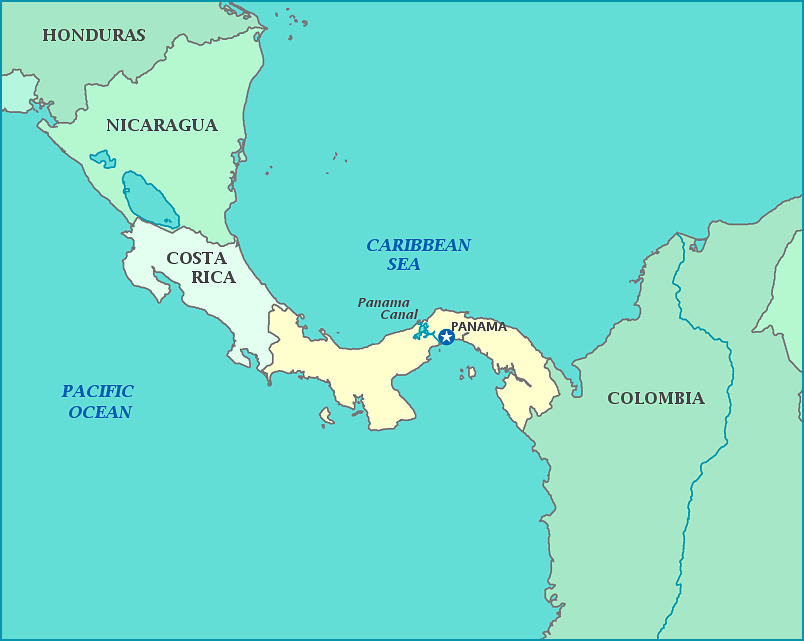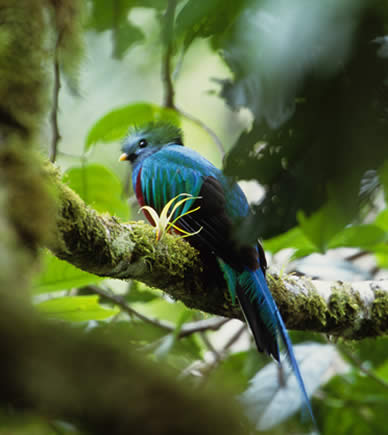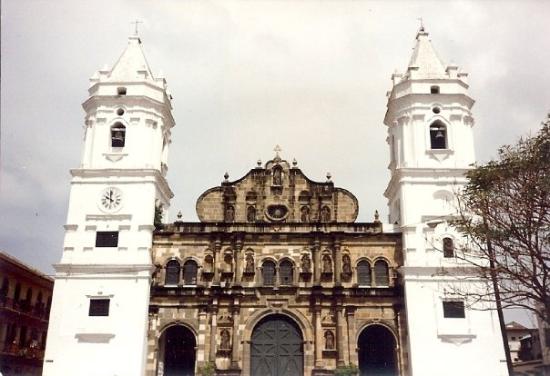Panama is the bridge that links Central America
with South America. This narrow tilde-shaped country is the only barrier
between the East and the West. One of the world’s major feats of construction,
the Panama Canal, helped ease the cost of doing business and allowed for goods
to be transported all over the world. I remember in 1999 when the US handed
control back to the Panamanians and was confused as to why it hadn’t happened
sooner.
It’s not exactly clear where the name Panama
originated from. Some linguists believe it could be stemmed from a several root
words: one theory is that it refers to a type of local tree while another may
refer to the many butterflies that are there during the late summer. One of the
more popular theories is that it refers to a fishing village named Panamá,
which means “abundance of fish.”
Panama is the last stop in Central American if
you’re heading south. It’s actually more horizontal than it is vertical. It
shares a western border with Costa Rica and an eastern border with Colombia, as
a gateway to South America. The Pacific Ocean is to the south, and the
Caribbean Sea is to the north. The central part of the country is mountainous
and heavily forested with rainforests. Many of the rainforests are so thick the
closer you get to the border with Colombia that it’s become a haven for
guerilla fighters and drug lords. It’s one of the reasons why the Pan-American
Highway stops here and picks up in Colombia. Panama has a tropical climate,
although they do have a rainy and dry season.
The earliest people living here were from the
Coclé, Cuevas, and other tribes. Many of the indigenous people died out due to
the lack of immunity from the European diseases the Spanish brought along with
them. (As Janet Jackson said, “Nasty, nasty boys.”) The first Spanish explorers
arrived in search of gold and other riches they had heard about (must’ve been
that 15th century fake news). They claimed the land for Spain and ruled
it for nearly 300 years. However, “ruling” was difficult since so many of the
indigenous tribes resisted something fierce. This area was frequented by many
different groups of people besides the Spanish and the indigenous tribes,
including British and Dutch pirates, freed African slaves, and one Scottish
colony that didn’t end well (probably ran out of whiskey). In 1717, Panama was
included as part of the viceroyalty of New Granada. During the 1800s, many of
the countries under Spain’s reach were itching to gain their independence, and
Panama was no different. They finally broke away from Spain in 1821 but then became
a part of Colombia. Right at the turn of the century, Panama was in the middle
of the Thousand Days War, often acknowledged as a war for land rights for the
indigenous people. The country finally did manage to gain its independence from
Colombia in 1903. In part of the treaty associated with the independence, the
US finagled its way to build and control the Panama Canal, which was completed
in 1914 (and wouldn’t be given back for another 85 years). From that point,
Panama became increasingly more militarized. Elections actually took place in
1968, but it all went to hell afterwards. Price freezing and other oppressive
measures were the order of the day. During the early 1980s, Gen. Noriega came
to power, and he had his hand in a bunch of shady illegal stuff going on. His
regime was generally supported by the US and even operated with the CIA, but
when massacres started taking place, the US threw sanctions at them like darts.
Then after they found out that Noriega was trafficking drugs in Florida, that
was apparently the last straw. The US used this as an excuse to invade the
country, which ended with the deaths of hundreds of civilians and military
alike. Today, the country is working on ways to improve its governmental
transparency and its social and civil services.
Panama City (not the one in Florida), or Ciudad de
Panamá, is the country’s capital city and largest city. It was founded in 1519,
located on the Pacific side of the isthmus. The Old Quarter features Spanish
and French architecture that was popular when the Panama Canal was being built.
Today, the city is a tourist spot and also serves as the country’s center for
government, higher education, commerce, sports, and banking. Although it’s not
the only arts center in the country, it’s certainly one of them.
Panama has one of the fastest growing economies in
Latin America and generally has a low unemployment rate. Once Panama took back
control of the Canal, it generated millions of dollars in revenue from tolls. Having
two coasts, it has several port cities, making it a prime location for doing
business. It’s also strengthened itself as a financial center, and tourism is a
contributor to its economy as well. Panama was also one of the first Latin
American countries to adopt the US dollar as its currency.
Since the government doesn’t keep track of religion
numbers, it’s only estimated that roughly 75-85% of Panamanians are Roman
Catholic, leaving 15-25% as Protestant. However, there are a number of other
minor denominations and religions represented throughout the country: LDS
Church, Bahai, Episcopalians, Jehovah’s Witnesses, Hindus, Buddhists, Muslims,
Seventh-Day Adventists, and other indigenous religions.
About 93% of Panamanians speak Spanish as their
first language. However, many people also speak and understand English as well
because of its status as an international language in business. There are also
a number of indigenous languages still spoken in the home along with Spanish.
Panama has a unique location. Because of its
narrowness, you can actually see the sun rise on the Atlantic and set on the
Pacific from the same point. The country is located just south of the hurricane
alley, so it rarely sees the number of tropical storms and hurricane that other
countries in Central America and the Caribbean experience. I’m already sold on
visiting Panama, but now I’m coming up with more reasons to go.
Up next: art and literature








No comments:
Post a Comment